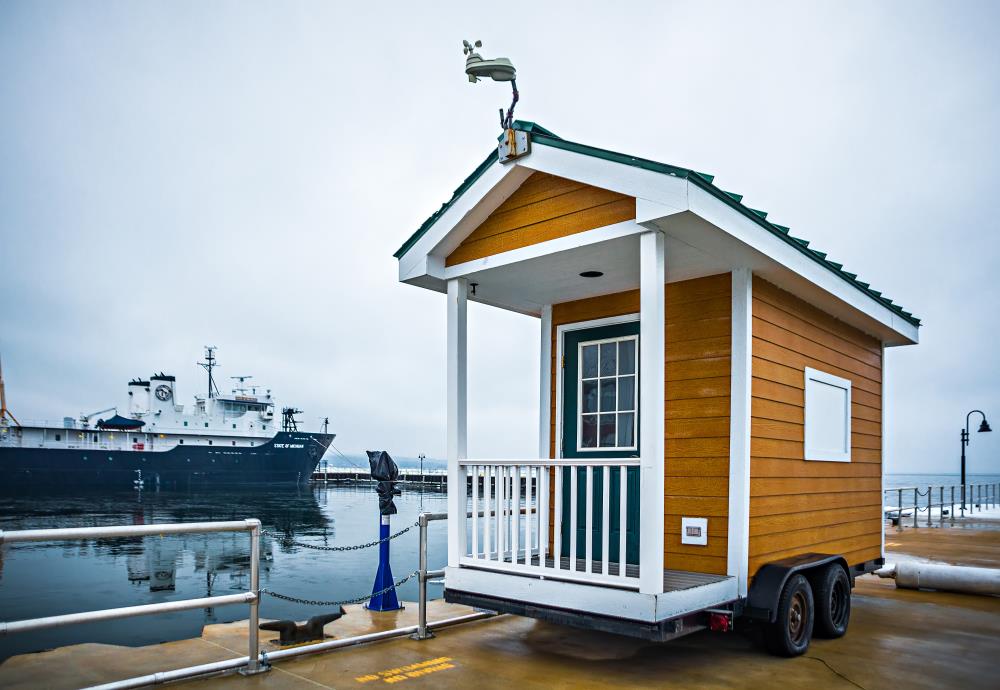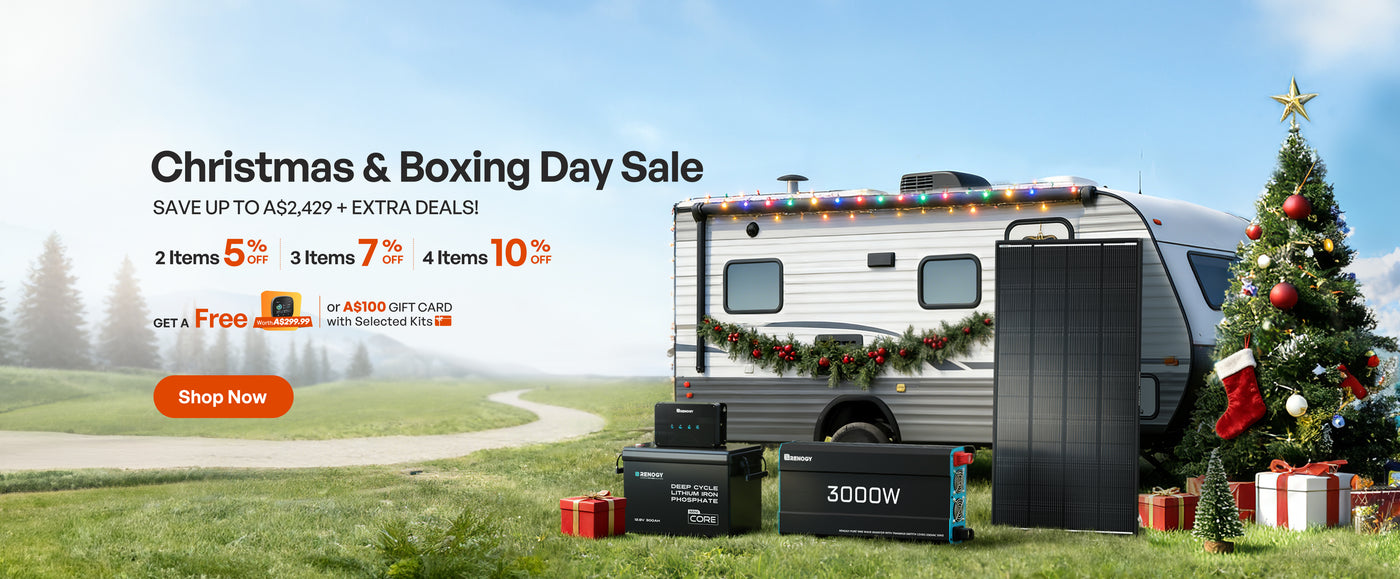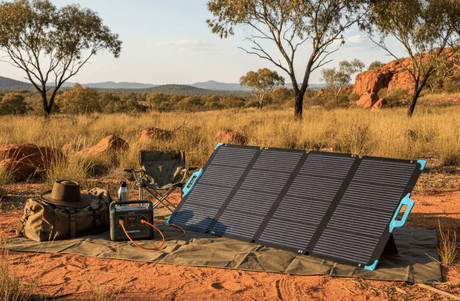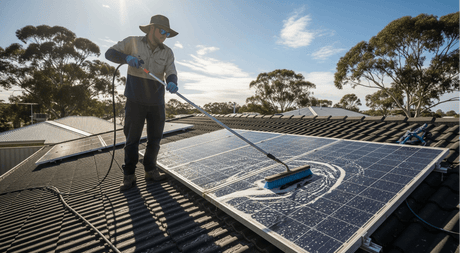Knowing the difference between on-grid, off-grid, and hybrid solar installations
Every photovoltaic solar panel system has certain solar components in common including solar panels, charge controllers, and inverters. Once you decide to go solar, you’ll have to choose what type of solar panel system you’d like to have, and you will need to buy extra components on top of that initial list to complete your installation. The three main types of solar installations are on-grid, off-grid, and hybrid solar systems. Which one is best for you, and what should you know about each of them?
How do solar systems work?
It’s helpful to understand the basics of how solar installations work before diving into the specific system types. Photovoltaic solar panels, which are made up of many solar cells made of silicon, create an electric current when sunlight hits the panels, they create an electric current. The current collected by solar panels feeds into a charge controller, which controls how much current goes to the battery. Charge controllers prevent batteries from being overcharged. Your battery bank will store and produce DC power. In order to use AC appliances, such as microwaves, laptops, and phone chargers, an inverter is connected to change the power from DC into usable AC. Then when you plug in an appliance or device, voila! You have power!
On-grid systems (grid-tie solar systems)
Grid-tied solar systems, or more commonly known as on-grid systems, are the widely used systems. Staying connected to the grid means you’ll have access to electricity whenever you need it, while still saving money by using solar panels to supplement your energy production.
Because you’re using energy from two different sources, you’ll be able to meet your energy needs with a smaller, cheaper installation. If you’re in an area with reliable and steady access to the grid, staying on-grid can be the most cost-effective way to go solar.
In on-grid solar panels systems, you can use energy from both the grid and your panels.When your solar panels aren’t producing power, such as when it’s too overcast or at night, you can simply tap into the grid. You can also typically use a mechanism known as net metering, which is when excess solar that’s produced during the day is credited to your account. Then at night, you can use those credits for power without paying extra.
Who should install on-grid solar systems?
On-grid solar is ideal for those who:
- Don’t have enough space or funds to build a large solar installation
- Live in an area without enough regular sunshine
- Want to save money on their utility bills without having to install a massive system
What should I buy for an on-grid system?
Components of an on-grid solar installation include solar panels, a charge controller, inverters, cables, and mounting hardware. On-grid systems will also typically include an array disconnect (to disconnect the solar arrays from the home for maintenance), power meter (to measure the amount of power used from the grid), and breaker panel (to prevent the appliances on a circuit from drawing too much electricity).
What are some important considerations for on-grid solar?
Many jurisdictions require that any solar installation on a home that’s going to be connected to the grid is installed by a licensed contractor for safety reasons. Be sure to look up the codes, rules, and regulations in your area.
It’s also important to remember that your on-grid installation will not work if there’s a blackout or outage.This is because it would be dangerous for your system to be pushing energy into the grid when workers may be out trying to make repairs to get the grid up and running again. Additionally, if you live in a remote or undeveloped area, on-grid solar may not even be an option for you.
Off-grid solar systems (stand-alone power systems)
Stand-alone power systems, or off-grid systems are perfect for those who live in a remote area without reliable and affordable access to the grid. People who live off-grid are also ensured access to their stored energy during a blackout. With that in mind, it’s especially important that your off-grid system is properly sized and designed to fit a variety of energy needs throughout the year.

Who should install off-grid solar systems?
Off-grid solar is ideal for those who:
- Live in an area without reliable, steady access to power from the grid
- Want to live sustainably and lower their carbon-footprint
- Are concerned about having access to power during a blackout
- Live in a tiny home, cabin, RV, boat, or remote area
- Want to be energy independent and stop paying money to the utility
What should I buy for an off-grid system?
The key components of off-grid solar installations include solar panels, a charge controller, a battery bank, an inverter, cables, and mounting hardware.
Because you’re relying solely on your own energy collection and storage, you’ll want to do some research to make sure you purchase powerful, efficient, and reliable batteries for your battery bank. We recommend investing in highly efficient and advanced lithium iron phosphate batteries. Lithium iron phosphate batteries have an extremely long cycle life, are compact and lightweight, and require little to no maintenance.
What are some important considerations for off-grid solar?
Benefits of off-grid solar systems include having access to power during a blackout, creating a lower carbon footprint, and putting an end to monthly utility bills. For those living in a tiny home, RV, cabin, boat, or isolated area or are in an area where they don’t have reliable, steady access to power from the grid, off-grid solar can be a great solution.
As mentioned, it is especially important to properly size your system and make sure you’re investing in high quality and efficient components. To size your system, we recommend using the Renogy solar panel calculator.
On-grid systems with battery storage (hybrid)
Hybrid systems are becoming more and more common as the cost of highly efficient lithium batteries continues to decrease. Adding batteries to an on-grid system means you’ll be able to save money on monthly utility bills, while also ensuring you’ll have energy access in any situation.
Who should install an on-grid solar system with battery storage?
On-grid solar systems with battery storage is ideal for those who:
- Have limited space or funds to build a system to cover 100% of their energy needs
- Have steady and reliable access to the grid
- Want to have access to back-up power in case of outages
What should I buy for an on-grid system with battery storage?
The key components of an on-grid system with battery storage is similar to an on-grid system, including solar panels, a charge controller, an inverter, cables, array disconnect, power meter, breaker panel, and mounting hardware. You’ll just need to add a battery bank to your setup.
What kind of battery should I purchase?
Again, we highly recommend the highly efficient lithium iron phosphate batteries for your battery bank in a hybrid solar installation. Lithium iron phosphate batteries have the best cycle life of deep cycle batteries, offering approximately 2000 cycles at 100% DoD (depth of discharge.)
What are some important considerations for on-grid solar systems with battery storage?
Adding a battery bank to your solar systems means you get the best of both worlds. You’ll lower your monthly energy bills, get to build a smaller system, and have access to energy in case of outages. It’s crucial to remember that like traditional on-grid systems, your local jurisdiction may require you to have the system installed by a licensed contractor. You’ll also need to make sure you’re following any other building codes, rules, and regulations.
Conclusion
As solar technology continues to improve and costs continue to decrease, solar is becoming a feasible possibility for more and more Australians. Regardless of if you choose to stay connected to the grid, collect and store all the energy you need on your own, or build a hybrid system, there’s most likely a solar installation type that’s just right for you.








![What Is a DC to DC Battery Charger [Comprehensive Guide]](http://au.renogy.com/cdn/shop/articles/IMG_3829_bd86de74-31d6-49fd-b9d5-265bb723091d.jpg?v=1757582605&width=460)


